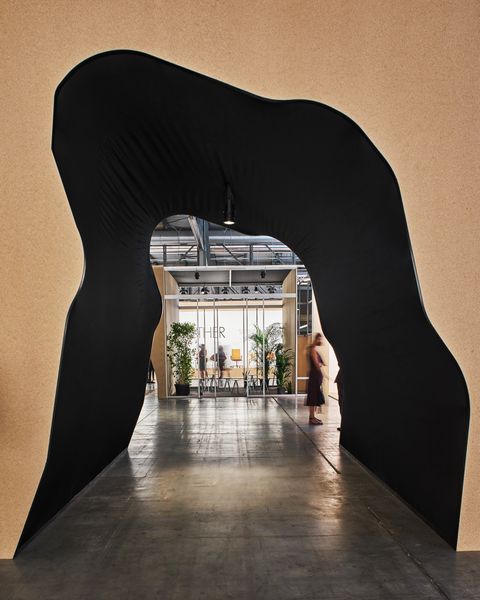As the world slowly stirs from the stasis of the pandemic, design events are reappearing across the globe. They remain a crucial nexus at which the industry can truly connect, see the latest products and be creatively inspired. Yet there’s also a heightened sensibility at work.
Decor + Design will be making a return to the Melbourne Exhibition Centre in 2022, featuring leading exhibitors and a focus on sustainability in design.
Meanwhile, over in the style capital of Milan, it’s been two years since the world’s largest design and furniture fair, Salone Del Mobile, took place. With its recent return in September, it is as if the international design industry collectively exhaled.
Now in its 60th year, Salone Del Mobile and Milan Design Week are the most important annual events on the international design calendar. This year’s week-long event at the Rho Fiera trade hall was a more scaled back affair than usual, called ‘Supersalone’.
The exhibition was a beautifully curated emergence from the chrysalis of the pandemic and a thoughtful, aspirational showcase for circular and biophilic design. Here are the design directions from Milan that moved us…
Deep Sustainability

Sustainability ran through the heart of this year’s Supersalone. Many of the products were made with natural materials or a higher percentage of recyclable materials than ever before. They also harnessed innovative supply chains aimed at reducing energy and resource use.
An environmental approach was also embedded in the organisation of the event itself. The curator for this year was the celebrated Milanese architect Stefano Boeri, who worked with a team of international designers on a show that took a 360-degree approach to sustainability.
Instead of the traditional branded booths for the exhibition at Rho Fiera, Architect Andrea Caputo designed a series of moveable walls. They were made with natural materials and zero glue, so that they were fully recyclable.
From the food courts to the exhibition halls and lounges, everything could be dismantled and then reused or recycled. The free-flowing design also allowed better visitor spacing and distribution, minimising infection.
Biophilic Design
Supersalone’s curator Stefano Boeri is the architect behind Milan’s ‘Bosco Verticale’ (literally ‘Vertical Forest’) which was completed in 2014.

‘Bosco Verticale’ is a hugely influential piece of Biophilic Design, a concept used to increase connectivity to the natural environment.
The two towers host 480 large and medium trees, 300 small trees, 11,000 perennial and covering plants and 5,000 shrubs. The equivalent – over an urban surface of 1,500 m2 – of 20,000 m2 of forest and undergrowth.
Fed and watered by an internal hydroponics system, the buildings provide a glorious splash of greenery on the Milan cityscape and have been a source of inspiration for projects such as Forestami, which incorporates greenery into the urban environment of Milan.
Biophilic design also wove through the Salone del Mobile exhibition; Forestami placed 200 trees throughout the venue, which they will plant in the city afterwards.
Malleable – and sustainable – materials like aluminium were also used to create shapes which echo the organic curves of nature. Like bamboo, aluminium was used in lighting, seating and decorative art.
We love the beautiful aluminium pendant lighting found in the apartment of Carwan Gallery founder Nicolas Bellavance-Lecompte, which uses coral-like formations.

Papier-Mâché
You may associate papier-mâché with kindergarten, but it’s been popping up everywhere in the design world. Consisting of pulped paper, it can be reinforced with fabric or bound with an adhesive. It’s sustainable and is also malleable like clay, allowing designers to play with proportion in exciting ways.
A stunning example is Bijoy Jain’s papier-mâché armchair and table for Hermès Home, which were on display at Super Salone. The Indian designer combines traditional techniques with modern sensibilities to produce striking, sustainable pieces.

Stylish Space Dividers
The past couple of years solidified a movement that began pre-pandemic; the need for multi-purpose spaces that still give a much-needed sense of separation. To this end, there were many clever room dividers and partitions on display in Milan.
Our favourite is ‘Koan Plus’, produced by Kokaistudios and actually first presented by Lualdi in 2019. It is a configurable system of fixed and sliding panels that combines glass and aluminium with the warmth of wood. The geometric system and aesthetics are a modern interpretation of traditional Chinese mobile partitions.
Koan Plus is made even more special by the fact that every piece is individual and customised, rather than mass produced.

Maximalist Tableware
At Decor + Design, we fully support the joyous mood of the maximalist tableware that was on display in Milan. As we begin to close the social distance that was enforced on us during the pandemic, we’re ready for tables that boast a debonair flair and bursts of colour which spark joy.

During Milan Design Week, La DoubleJ’s new shop on Via Sant’Andrea was bubbling with energy. The brand’s founder JJ Martin is originally from LA but has become a fixture on the Milan design scene. Their latest entertaining range is a happy melange of watermelon pinks and emerald greens that practically leap off the table.
While we’ll always look to Milan for inspiration, we’re also excited about the next instalment of Decor + Design and the Australian International Furniture Fair (AIFF) at Melbourne Exhibition Centre, 14 – 17 July 2022. The event will be a crucial platform for the industry to connect and showcase the latest collections.
Register now for updates and inspiration from the world of design.
